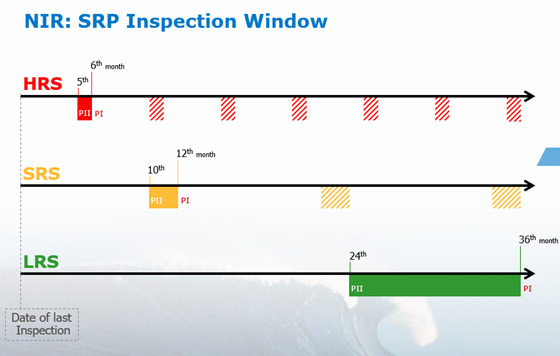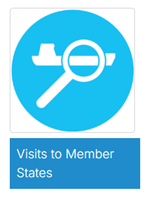EU legal framework
Since 1995, port State control has been also part of the EU maritime legislation framework. Currently, 26 European countries are signatories of Paris MoU whose instructions and circulars guide the port State control Officers (PSCO) during their inspections.
With the aim of reducing “toxic” shipping in EU waters by:
- ensuring ships respect EU and international maritime safety and environmental rules;
- establishing common criteria for ship inspections, taking into consideration the Paris MoU regime already established,
the European Parliament and the Council adopted the Directive 2009/16/EC of 23 April 2009 on port State control (Recast) (OJ L 131, 28.5.2009, pp. 57-100) which took effect from 17 June 2009 and whose pillars are noted below.
- The legislation applies to any eligible ship and its crew calling at, or anchored in, an EU port.
- EU governments must ensure they have a sufficient number of qualified inspectors with the necessary resources to carry out the inspections.
- All eligible ships using an EU port are given a risk profile in the THETIS inspection database designed, developed and hosted by EMSA. This is based on criteria such as the type and age of a vessel and determines the thoroughness and frequency of the inspections.
- To make the planning of inspections easier, THETIS is linked to the SafeSeaNetsystem which provides information on ships in, or expected at, all EU ports.
- Annual inspections are compulsory for ships with a high-risk profile and are optional for others.
- Priority is given to inspecting vessels that infrequently dock at EU ports.
- Initial inspections check that certificates and documents are in order, that outstanding remarks were addressed and closed, and assess a ship’s overall status including the living and working conditions of the crew.
- If deficiencies are discovered, the ship is subject to a more detailed inspection.
- Expanded inspections are reserved for high-risk profile vessels, passenger ships, and oil, gas, chemical and bulk carriers over 12 years of age.
- Any deficiencies discovered must be rectified. If these are clearly a risk to safety, health or the environment, the vessel is detained until they are completely rectified.
- National authorities may refuse port access to ships which have been detained more than twice during the previous 2 to 3 years (so called “banning”).
- Shipowners or operators may appeal against any detention or refusal of access.
- The European Commissionmaintains and updates the inspection database. It regularly publishes details of companies with low or very low compliance rates on the THETIS website.
More in detail, the Directive introduced what has been referred to as the New Inspection Regime (NIR) featuring an array of requirements and provisions to improve the current system of PSC and strengthen its three main components: harmonisation, targeting/selection and inspection. For this purpose, a risk profile (SRP) is assigned to every vessel which will be periodically inspected depending on it. Figure 1 shows the periodicity of PSC inspections of a ship with a High (HRS) or Standard (SRS) or Low Risk (LRS) profile.

Figure 1 – Time window for the periodic inspection of ships under the Paris MoU regime.
Additional inspections may also be triggered by overriding or unexpected factors.
Pertaining its enforcement prerogatives, the EC has assigned EMSA the task of conducting visits to MSs to evaluate and monitor the effective implementation of Directive 2009/16/EC and to monitor the overall functioning of the Union’s PSC regime. The rationale behind the visits is to review the infrastructure and legislative and administrative provisions adopted by the MS to ensure the fulfilment of the requirements of the Directive. The visits examine the following five processes and areas: 1. Organization; 2. General Commitments; 3. The Cycle of PSC Inspection – Information System; 4. Personnel – Logistics; 5. Enforcement and Sanctions.
The way forward.
In 2018, the Commission concluded an ex-post evaluation of Directive 2009/16/EC as a part of the Maritime Fitness Check. The outcome confirmed that the PSC Directive is relevant, effective, and efficient and brings added value at EU level, playing a key role in enforcing IMO and EU standards, thereby contributing to a high level of safety, security and sustainability of maritime transport as well as ensuring a level-playing field between Member States.
Since Directive 2009/16/EC entered into force, there have been changes in the international regulatory environment, in particular in the Paris MoU and the IMO and technological developments. Those changes as well as the experience gained from the implementation of Directive 2009/16/EC were considered an added value to enhance the PSC inspection regime in Europe.
In addition, a number of international conventions have been ratified by the Member States and have entered into force since 2011. Those are the International Convention for the Control and Management of Ships’ Ballast Water and Sediments adopted on 13 February 2004 (the ‘BWM Convention’) and the Nairobi International Convention on the Removal of Wrecks adopted on 18 May 2007 (the ‘Nairobi Convention’). Those international conventions should therefore be included in the list of Conventions covered by Directive 2009/16/EC, to allow them to be enforced as part of the port State control system.
On June 2023 the European Commission tabled a proposal for revamping the PSC Directive aimed at:
- aligning its text to all changes to the Paris MoU text already decided upon.
- Providing for a voluntary PSC system- separated from the current port State control regime – for fishing vessels over 24 metres in parallel with the current regime.
- Introducing an environmental parameter to the ship risk profile based on the number of deficiencies cumulated in respect of specific relevant instrument such as MARPOL, the Ballast Water Management Convention, the Nairobi International Convention on the Removal of Wrecks etc.
- Promoting the digitalization through e-certificate. In is noted that the number of ships currently carrying electronic certificates is on the rise and is expected to increase. Therefore, the effectiveness of port State control should be enhanced by making greater use of electronic certificates, to allow for more ship-focussed and better prepared inspections.
- Establishing additional requirements such as flexibility for the fair share (i.e. allowing Member States to miss inspections in cases of force majeure. like the COVID-19 pandemic was), quality management system, etc.
Directive (EU) 2024/3099 of 27 November 2024 amending Directive 2009/16/EC on port State control entered into force on January 5th, 2025. Member States shall transpose its provision into the domestic legislation not later than July 6th, 2027.


